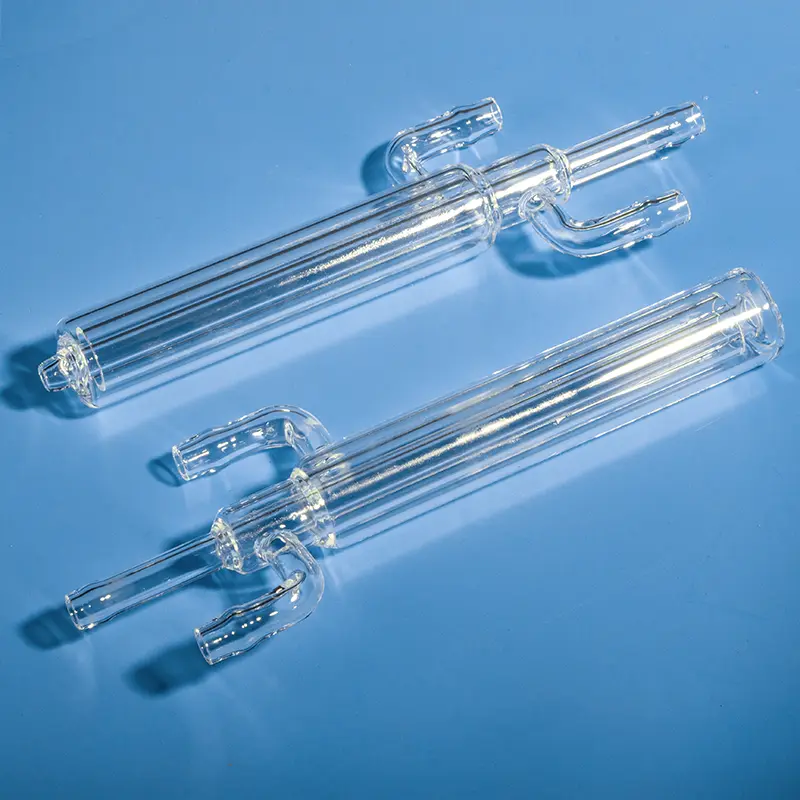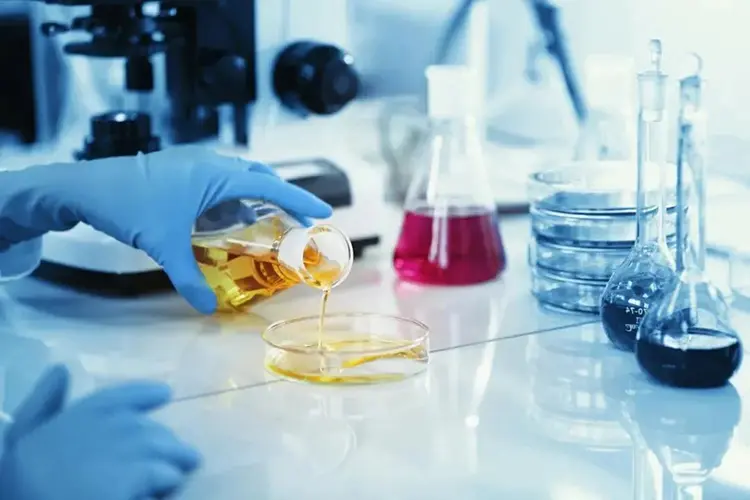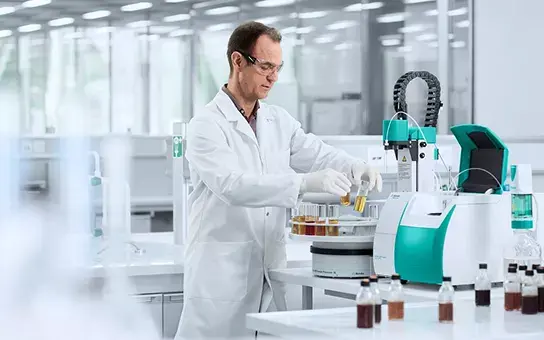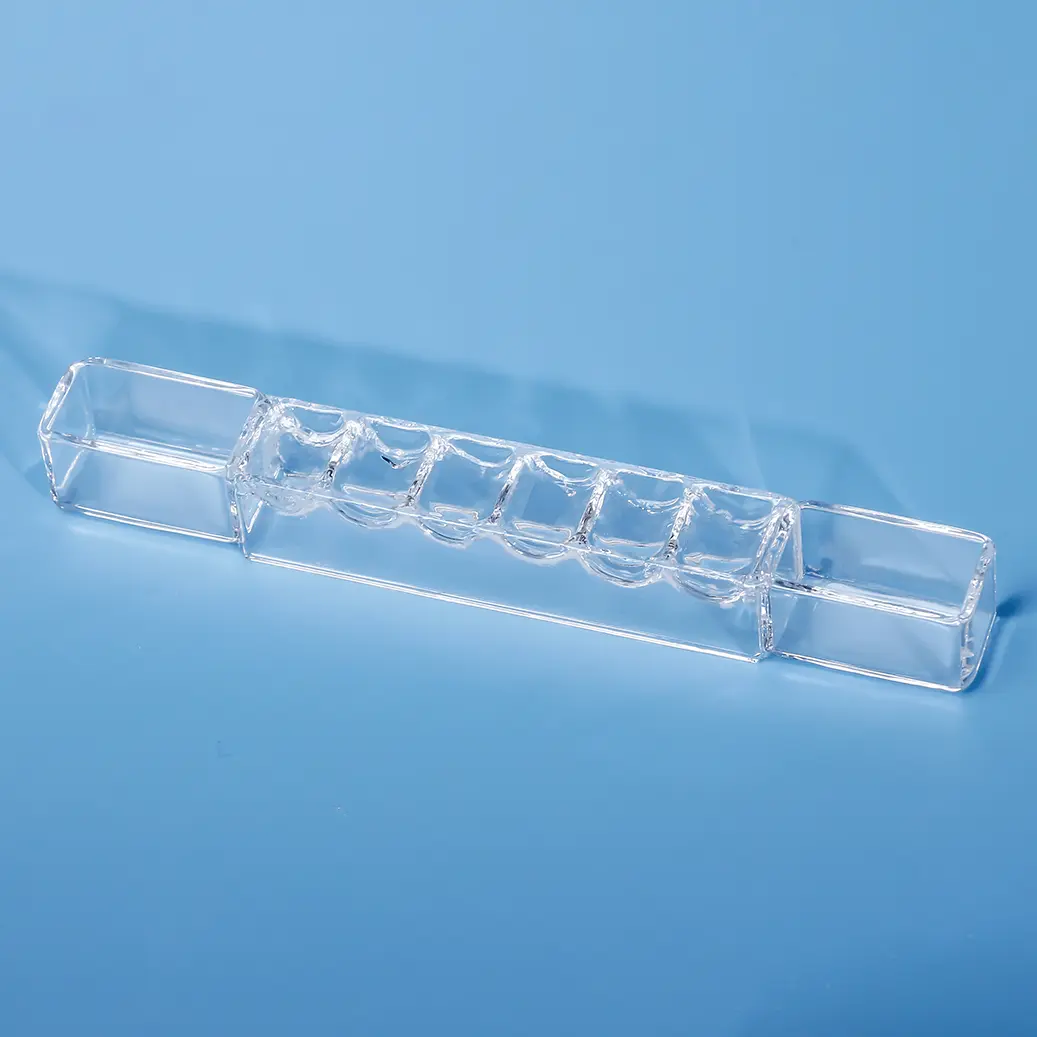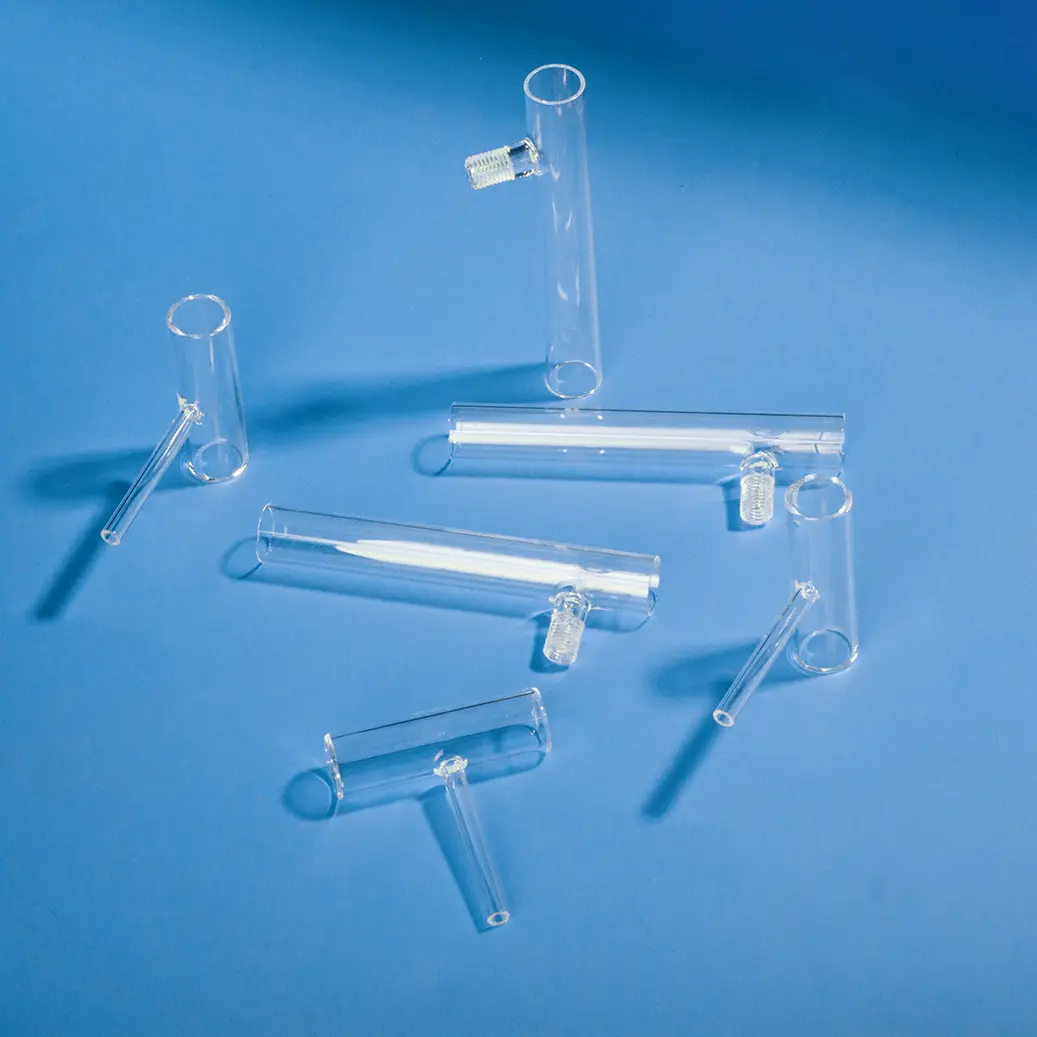A quartz branch tube reactor is a specialized reactor crafted from quartz glass, renowned for its exceptional chemical stability, high mechanical strength, and excellent optical transparency. This type of reactor is designed to facilitate chemical reactions under demanding conditions, such as high temperatures and pressures. Quartz glass is primarily composed of silicon dioxide (SiO2), which provides inherent resistance to corrosion from various strong acids, strong bases, and organic solvents. These reactors find extensive use in diverse fields like chemical analysis, biological research, and environmental monitoring. In chemical analysis, the quartz branch tube reactor acts as a highly sensitive and precise reaction vessel or detection unit, ensuring reliable and repeatable results. In biological research, it is essential for applications like PCR amplification and nucleic acid electrophoresis. For environmental monitoring, it is used to analyze pollutants in air, water, and soil samples. Key advantages include high thermal stability, superior chemical inertness, excellent optical properties (particularly in UV and IR ranges), and robust mechanical strength. However, quartz’s inherent lack of ductility and its fragile nature need to be considered during handling and operation.
| Eigenschaft Inhalt | Immobilienwerte |
|---|---|
| SiO2 | 99.99% |
| Dichte | 2,2×10³ kg/cm³ |
| Härte | 5,5 - 6,5 Mohs'sche Skala 570 KHN 100 |
| Zugfestigkeit | 4,8×10⁷ Pa (N/mm2) (7000 psi) |
| Druckfestigkeit | >1,1×10⁹ Pa (160.000 psi) |
| Wärmeausdehnungskoeffizient | 5,5×10-⁷ cm/cm-°C (20°C-320°C) |
| Wärmeleitfähigkeit | 1,4 W/m-°C |
| Spezifische Wärme | 670 J/kg-°C |
| Erweichungspunkt | 1730°C (3146°F) |
| Glühpunkt | 1210°C (2210°F) |
| Dehnungspunkt | 1120°C (2048°F) |
| Arbeitstemperatur | 1200°C (2192°F) |
| Elektrischer spezifischer Widerstand | 7×10⁷ Ohm cm (350°C) |
| Größe | Kundenspezifisch |
| Logo | Kundenspezifisches Logo akzeptieren |
Exceptional Chemical Stability
Primarily composed of silicon dioxide (SiO2), quartz glass offers outstanding resistance to corrosion from a wide array of strong acids, strong bases, and organic solvents. This makes the reactors ideally suited for diverse chemical reaction environments.
Superior Optical Properties
Quartz glass exhibits excellent optical transparency, making these reactors perfect for experiments requiring light transmission or spectroscopic analysis. Examples include photochemical reactions and spectral detection where high-quality light interaction is crucial.
High Thermal Resistance
The inherent thermal stability of quartz glass allows these reactors to withstand high temperatures, thus making them suitable for demanding chemical reactions requiring high-temperature conditions like high-temperature synthesis or pyrolysis.
Robust Mechanical Strength
Quartz glass provides significant mechanical strength, ensuring stability under high-pressure conditions and making these reactors reliable for high-pressure reaction environments.
Anwendungsszenario
Analytical Chemistry
In analytical chemistry, these reactors are frequently employed as reaction vessels or detection units in techniques like gas chromatography (GC), high-performance liquid chromatography (HPLC), and atomic fluorescence spectroscopy (AFS). They offer high sensitivity, precision, and excellent repeatability for reliable quantitative analysis.
Biotechnology and Life Sciences
In biotechnology and life sciences, quartz branch tube reactors are utilized in experiments such as PCR amplification, nucleic acid electrophoresis, and cell culture. Their ability to withstand high temperatures and pressures, combined with their excellent optical transparency, allows for real-time monitoring of amplification products and cellular processes.
The typical operating temperature range for a quartz branch tube reactor is between -50°C and 1200°C. However, the precise temperature limit is contingent on the purity of the quartz glass and the specific manufacturing processes employed. High-purity quartz glass provides enhanced thermal stability, maintaining its integrity at elevated temperatures. Therefore, it is crucial to select the appropriate quartz glass grade based on your experiment’s temperature requirements and to operate the reactor within its safe operating range to prevent potential material failure or compromised performance due to excessive heat.
Proper cleaning and maintenance of a quartz branch tube reactor are essential for ensuring its optimal performance and longevity. Initially, inspect the reactor for any signs of cracks or damage prior to use. After each use, promptly clean the reactor’s interior with deionized water or a suitable solvent to prevent the build-up of residues and potential corrosion. For persistent stains or difficult to remove deposits, consider using an ultrasonic cleaner or specialized cleaning solutions. Regular inspection of the reactor’s seals and connectors is necessary to ensure they remain intact and leak-free. During storage, keep the reactor in a dry, cool, dust-free environment, shielded from direct sunlight and potential mechanical damage.
When using a quartz branch tube reactor, it is crucial to adhere to the following safety measures: Firstly, always wear appropriate personal protective equipment (PPE), such as gloves, safety goggles, and a lab coat, to protect against exposure to chemical reagents or high temperatures. Secondly, when operating under high-temperature and high-pressure conditions, verify that the reactor’s seals are tight to prevent explosions from overpressure. Additionally, strictly follow established experimental operating procedures, and avoid any sharp vibrations or impacts to prevent breakage of the reactor. Finally, take special care when handling corrosive reagents such as strong acids and strong bases, verifying the reactor’s compatibility and material resistance to chemical corrosion to avoid damage.
Häufig gestellte Fragen
Quarzglas ist ein hartes und sprödes Material mit ausgezeichneten physikalischen und chemischen Eigenschaften, extrem hoher mechanischer Härte, guter elektrischer Isolierung, hoher Temperatur- und Korrosionsbeständigkeit, geringer und stabiler Verzögerungsleistung, guter Lichtdurchlässigkeit usw. Es findet breite Anwendung in der Halbleiterindustrie, Optik, Elektrizität, Chemie, Luft- und Raumfahrt, Automobilindustrie und anderen Bereichen. Harte und spröde Werkstoffe sind schwer zu bearbeiten, und in vielen Bereichen werden dringend Schneidverfahren mit geringem Kanteneinbruch, geringem Materialverlust, geringer Querschnittsrauheit und einem großen Schnittdickenbereich benötigt. Das traditionelle Schneidverfahren für Quarzglas ist das mechanische Schneiden, d. h. das Scheibenschneiden. Zu den nicht-traditionellen Schneidverfahren gehören Wasserstrahlschneiden, elektrochemisches Drahterodieren, kontinuierliches Laserschneiden usw. Das mechanische Schneiden ist kostengünstig, aber der Kontakt zwischen der Scheibe und dem Material verursacht einen hohen Werkzeugverschleiß, und das Material wird leicht durch das Werkzeug verschmutzt. Quarzglas neigt zu Kanteneinbrüchen, Mikrorissen und Eigenspannungen, was die Festigkeit und Leistung des Materials beeinträchtigt! Das Schneiden von Kurven ist schwierig und erfordert Nachbearbeitungen wie Schleifen und Polieren. Das Laserschneiden kommt nicht direkt mit dem Material in Berührung, hat keine Kontaktspannungen und kann komplexe Kurvenschnitte durchführen. Der Pikosekundenlaser hat die Vorteile eines kleinen Punktdurchmessers, einer hohen Präzision, einer kurzen Einwirkungszeit auf das Material und eines kleinen Einwirkungsbereichs und eignet sich für die Bearbeitung von harten und spröden Materialien.
。

